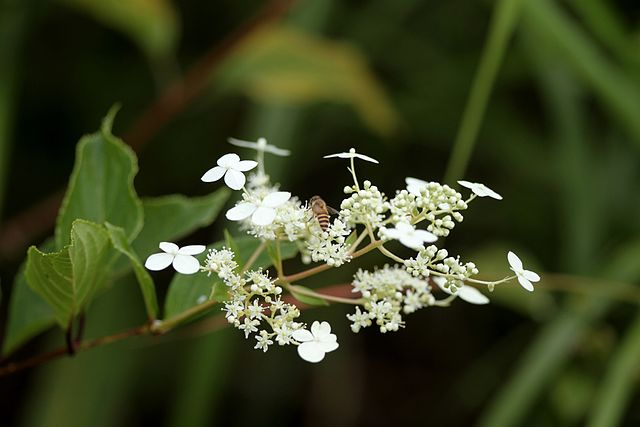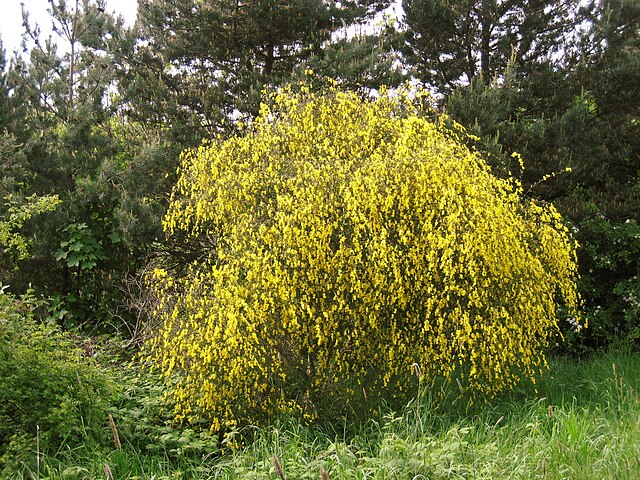Hydrangea, commonly named the hortensia, is a genus of more than 70 species of flowering plants native to Asia and the Americas. By far the greatest species diversity is in eastern Asia, notably China, Korea, and Japan. Most are shrubs 1–3 m tall, but some are small trees, and others lianas reaching up to 30 m (100 ft) by climbing up trees. They can be either deciduous or evergreen, though the widely cultivated temperate species are all deciduous.
Hydrangea
Hydrangea flower color changes based on the pH in soil. As the graph depicts, soil with a pH of 5.5 or lower will produce blue flowers, a pH of 6.5 or higher will produce pink hydrangeas, and soil in between 5.5 and 6.5 will have purple hydrangeas.
Hydrangea paniculata
Hydrangea knowltoni
A shrub or bush is a small-to-medium-sized perennial woody plant. Unlike herbaceous plants, shrubs have persistent woody stems above the ground. Shrubs can be either deciduous or evergreen. They are distinguished from trees by their multiple stems and shorter height, less than 6–10 m (20–33 ft) tall. Small shrubs, less than 2 m (6.6 ft) tall are sometimes termed as subshrubs. Many botanical groups have species that are shrubs, and others that are trees and herbaceous plants instead.
A broom shrub in flower
A rhododendron shrubbery in Sheringham Park
Shrub vegetation (with some cactus) in Webb County, Texas.
Blackthorn shrub (Prunus spinosa) in the Vogelsberg








